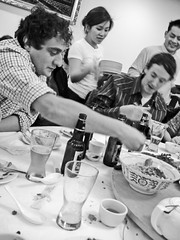
In the April edition of Physical Medicine and Rehabilitation http://bit.ly/iJ4Fzr, Dr Watt and his team from Department of Physical Medicine and Rehabilitation, University of Virginia, Charlottesville, VA discuss Effect of a Supervised Hip Flexor Stretching Program on Gait in Elderly Individuals.
The group looked at eighty-two healthy elderly individuals, with 39 subjects in the control group and 43 subjects in the treatment group. The treatment group completed a 10-week, twice-daily hip flexor stretching program, which was supervised twice weekly by a rehabilitation clinician. The 10-week supervised hip flexor stretching program was effective in increasing stride length and peak hip extension during walking in elderly adults who had limited preintervention hip extension during walking. These results support the use of a simple stretching program for elderly individuals in counteracting age-related decline in gait function.
The LegTutor system is used to customize isolated and coordinated knee and hip exercises and is used to improve patient functional walking ability.







